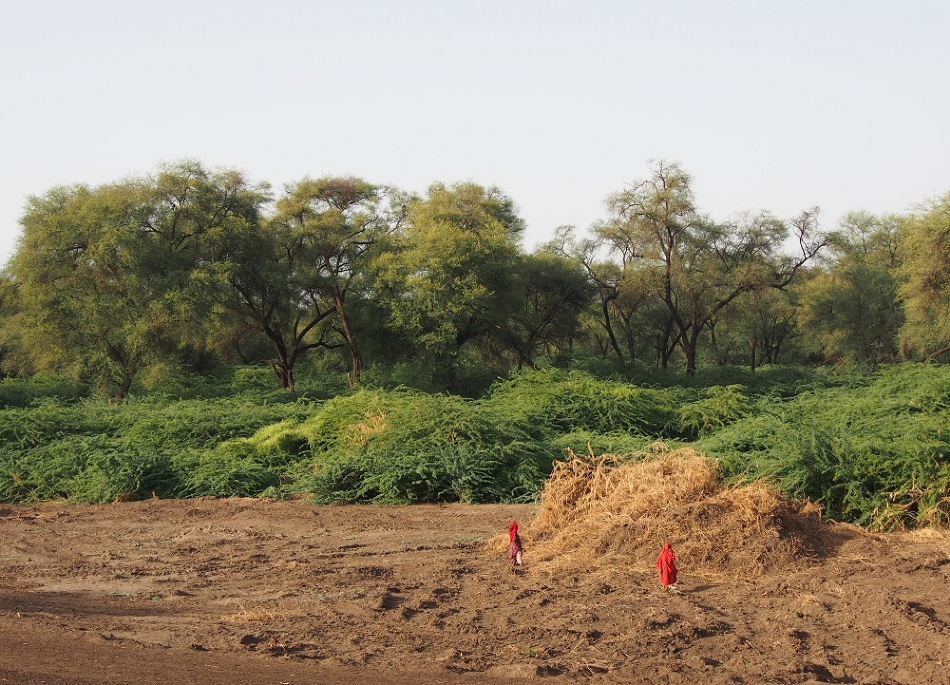Oct 12 2020
An international group of researchers has partnered to suggest a series of global guidelines for the sustainable use of non-native tree species to help safeguard global ecosystems and biodiversity already endangered by climate change.
 Prosopis juliflora, where in Afar County, Ethiopia, its coverage rapidly increased to 1.2 million ha in just 31 years. Image Credit: CABI.
Prosopis juliflora, where in Afar County, Ethiopia, its coverage rapidly increased to 1.2 million ha in just 31 years. Image Credit: CABI.
Published recently in the journal NeoBiota, the new paper uses the Council of Europe—Bern Convention Code of Conduct on Invasive Alien Trees as a beginning point, to present eight recommendations all directed toward making the most of non-native trees, while reducing their negative influences.
The recommendations comprise using native trees, or non-invasive non-native trees contrary to invasive non-native trees, being mindful of the hazard of invasion, reflecting on global change trends, creating and supporting international networks and joint research, and data sharing on native and non-native trees.
The researchers propose that the recommendations are a first step toward preparing a global agreement on the safety measures that should be taken while adding and cultivating non-native trees and serve to balance statutory stipulations under national and international legislation.
The application of the global guidelines and the achievement of their goals will help to conserve forest biodiversity, ensure sustainable forestry, and contribute to the achievement of several Sustainable Development Goals (SDGs) of the United Nations linked with forest biodiversity.
Dr Giuseppe Brundu, Study Lead Author, University of Sassari
The team shows how non-native species, such as Prosopis juliflora—which was introduced in Eastern Africa in the 1970s as a source of wood and fodder for livestock and help decrease soil erosion and the impact of dust storms—constitute 44% of plantation forests worldwide.
They highlight huge tree-planting campaigns, which include the 60 Million Trees Initiative from the Madagascar Government, that either do not stipulate or include non-native species cultivated—repeatedly to balance ecological and economic interests as with the case in Madagascar.
Other similar schemes include 60 million trees planted in Italy—one for each Italian citizen to combat climate change—where a combination of native and non-native tree species was suggested.
However, the researchers caution that unless their international guidelines are adhered to earnestly, the spread of non-native tree species will render the conservation of forest biodiversity and work toward realizing several SDGs—related to forest sustainability—tough to accomplish.
The global guidelines on non-native tree species offer general recommendations and provide a basic framework and suggestions on tools for planning and implementing sustainable use of non-native trees in nationally appropriate and scientifically sound practices that account for national and sub-national needs.
Dave Richardson, Co-Author and Professor, Stellenbosch University
Dr Urs Schaffner, co-author and Head Ecosystems Management at CABI Switzerland, is an expert on Prosopis juliflora and is certain that such invasive trees can also harshly impact rural people’s occupations with, for instance, 86% losses in grassland seen in Baringo Country, Kenya.
It is important to bear in mind that national circumstances vary considerably in terms of biophysical conditions, institutional and legal frameworks, economic challenges and possibilities, management, and use, among other factors.
Dr Urs Schaffner, Study Co-Author and Head Ecosystems Management, CABI Switzerland
Dr Schaffner added, “Therefore, no ‘one-size-fits-all’ approach can be applied in the implementation of the guidelines. Instead, various technical and organisational options must be combined to achieve efficient implementation of the guidelines.”
Journal Reference:
Brundu, G. P., et al. (2020) Global guidelines for the sustainable use of non-native trees to prevent tree invasions and mitigate their negative impacts. NeoBiota. doi.org/10.3897/neobiota.61.58380.